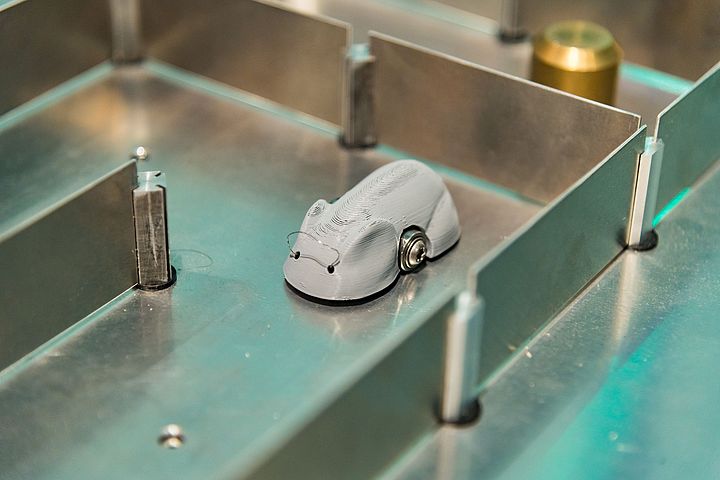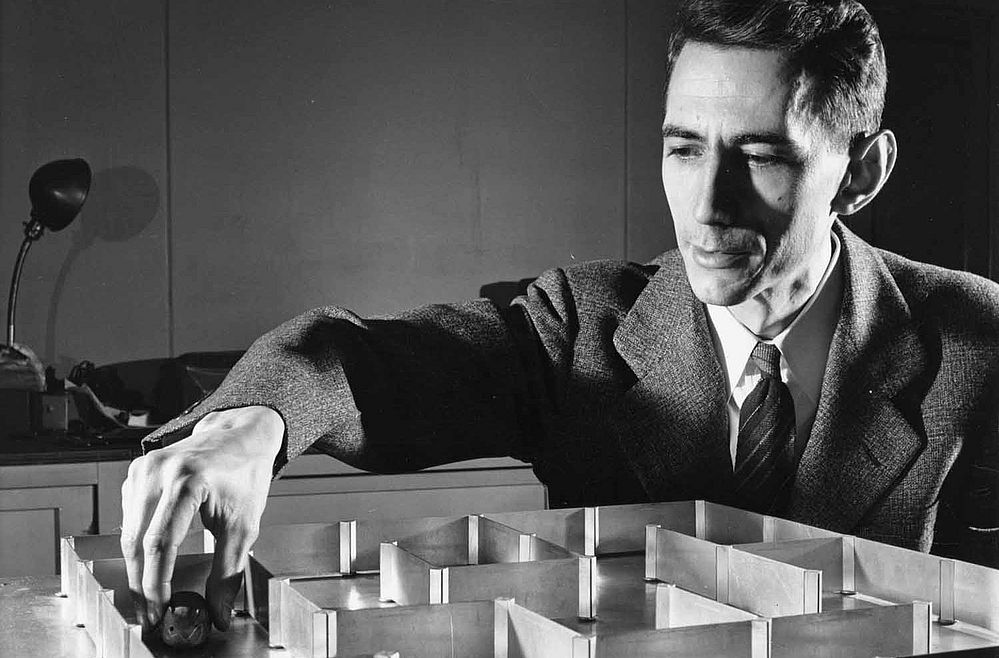"Theseus" is what the mathematician and founder of information theory Claude Shannon named his mouse in 1950. This mouse was able to find its way through a labyrinth and was thus the very first self-learning machine. Shannon built this device using relays as they were then used in telephone exchanges, and it is still an astonishing invention.
Independently to the goal
When you place this little mechanical mouse anywhere in the labyrinth, it will search methodically until it finds the goal. The path to the goal is stored in relays beneath the labyrinth, so if you return the mouse to the labyrinth, it can call up the path it stored and use it to find the goal again without further searching.
Working in close cooperation with the MIT Museum in the US and the Shannon family, the HNF and Paderborn electronics expert Rainer Glaschick created a replica of Theseus. It operates with today’s technology – three Arduino microcontrollers – making it possible to present the technological milestone of a problem-solving machine during tours through the museum.

